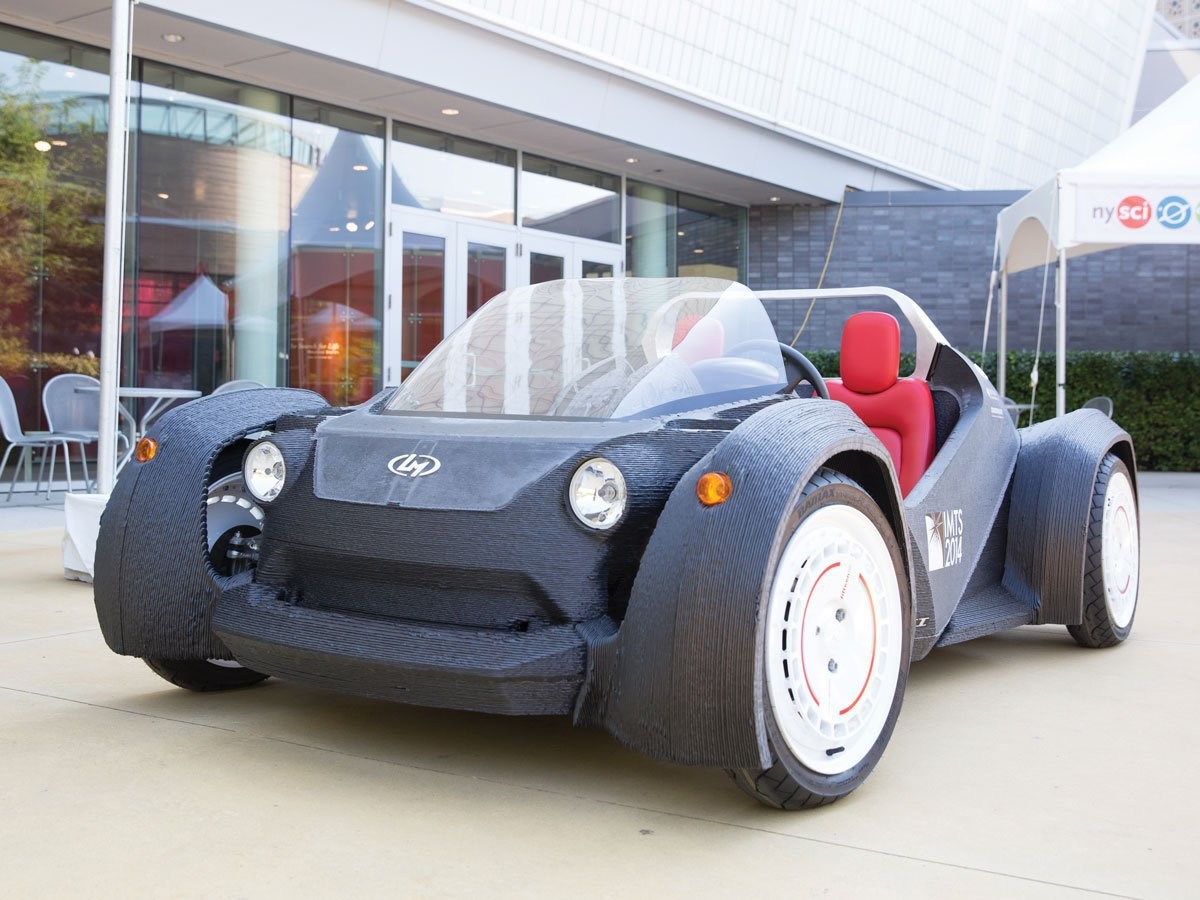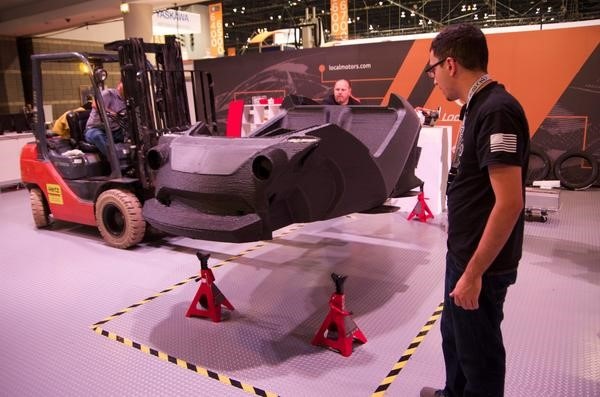
The average car is a jumbled amalgamation of 20,000 different parts, working in unison to transport you from point A to B with the power of hundreds of horses. But why does it take so many different components to build a working vehicle in the twenty-first century? Partially because built-in deterioration keeps the automotive industry afloat and partially because it’s less expensive to source components than to fabricate them yourself. This entire paradigm is about to be tossed on its head with the introduction of the world’s first 3D-printed car, the Strati.

The Strati – meaning layers – was printed over the course of 44 hours and assembled out of a mere 40 parts in two days by a team representing Local Motors. The vehicle is fully functional, to-scale, and will debut at the six-day IMTS, International Manufacturing Technology Show 2014, held at McCormick Place in Chicago, Ill.
Key to the vehicle’s rapid creation is a new method of manufacturing dependent on a hybrid additive/subtractive machine equipped with a large diameter extrusion head that can alternate between depositing 40 pounds of carbon reinforced ABS plastic per hour, and milling down their surfaces to more precision specifications. This new manufacturing process, called Direct digital manufacturing (DDM), allowed (almost) the entire Strati to be printed from a single composite piece of material. All other mechanical components such as the battery, motor, wiring, and suspension, were sourced from third-party vendors and fit during the two-day assembly process.

“The Strati was designed by our community, made in our Microfactory, and will be driven by you,” said John B. Rogers, Jr., CEO of Local Motors. “This brand-new process disrupts the manufacturing status quo, changes the consumer experience, and proves that a car can be born in an entirely different way.” The innovative project uses advanced manufacturing techniques established by the U.S. Department of Energy's (DOE) Manufacturing Demonstration Facility at Oak Ridge National Laboratory (ORNL); the technology pushes the boundaries of large-scale 3D printing to create a most cost-effective avenue of manufacturing and demonstrate that even the automotive industry can benefit from 3D-printing. Once the event is finished, Local Motors plans to make production-level 3D-printed vehicles publically available for potential buyers.
Although, it is worth considering the prospect of ABS plastic’s impact on the integrity of the vehicle. Is the material capable of producing a crumble zones? Is it even safe in the event of a collision? These questions and more will be part of Local Motor’s ongoing challenges before such a vehicle can even hope to gain commercial momentum.
Via Local Motors/Phys.org
Advertisement
Learn more about Electronic Products Magazine





